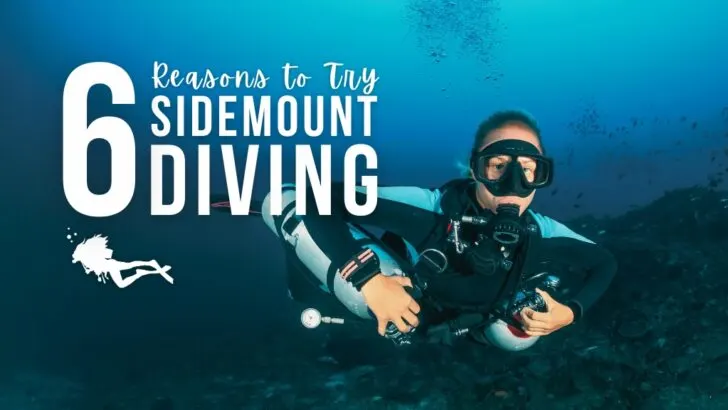Ever wondered why sidemount diving has gained so much popularity? You’re not alone.
At first sight, diving with cylinders on either side of your body looks like a lot of effort. After all, diving with just one tank is tricky at the beginning! Yet once divers welcome a second tank into their world, few turn back.
In fact, sidemount diving unlocks a range of benefits for scuba divers compared with backmount diving. These include enhanced comfort, increased air supply, and access to smaller spaces – just to name a few!
Interested? We don’t blame you. Here, we’ll run through what sidemount diving is and the amazing benefits it offers, as well as giving you some pointers on the best sidemount harnesses for women.
What is sidemount diving?
Sidemount diving differs from backmount diving in terms of how the tanks are arranged, often called ‘tank configuration’.
Unlike regular diving, sidemount diving involves tanks arranged at the side of the diver. This is different to scuba diving with a twinset – this also involves two tanks, but both are located on the diver’s back.
Most often, sidemount diving is done with two cylinders. However, it’s possible to dive in a sidemount configuration with one, three, or more tanks.
Sidemount diving originated in caves, but it’s become more common in other types of technical diving, too. In fact, in recent years, it’s gained traction among recreational divers from around the world. But why is this?
1. Sidemount diving offers a streamlined profile
This is the main reason why sidemount diving originally took off. Cave divers discovered that when you place your tanks at your side, rather than on your back, you have a smaller profile.
Furthermore, with a sidemount configuration, it’s easy to release the bottom part of a tank and hold it out in front of you. This reduces your profile even more, so it’s a very handy technique if you’re exploring small spaces.
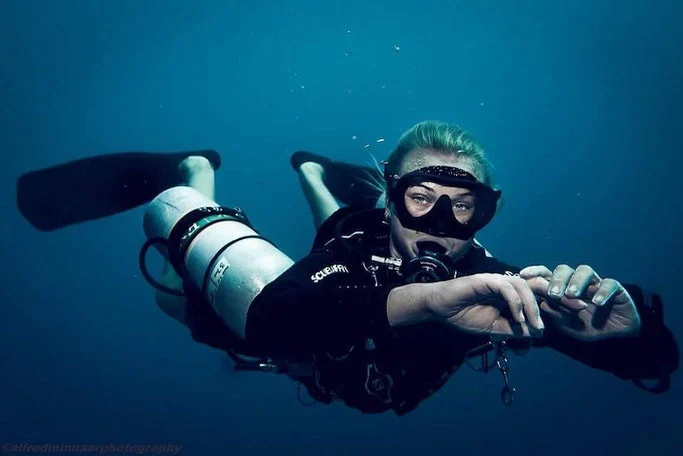
As an added bonus, by reducing your profile you also reduce your drag in the water. For some people, this makes moving through the water noticeably easier.
2. Sidemount gives you an increased gas supply
Isn’t it a pain when you run out of gas but know you have plenty of dive time left within your safety limits? With two tanks, you can truly make the most out of your bottom time.
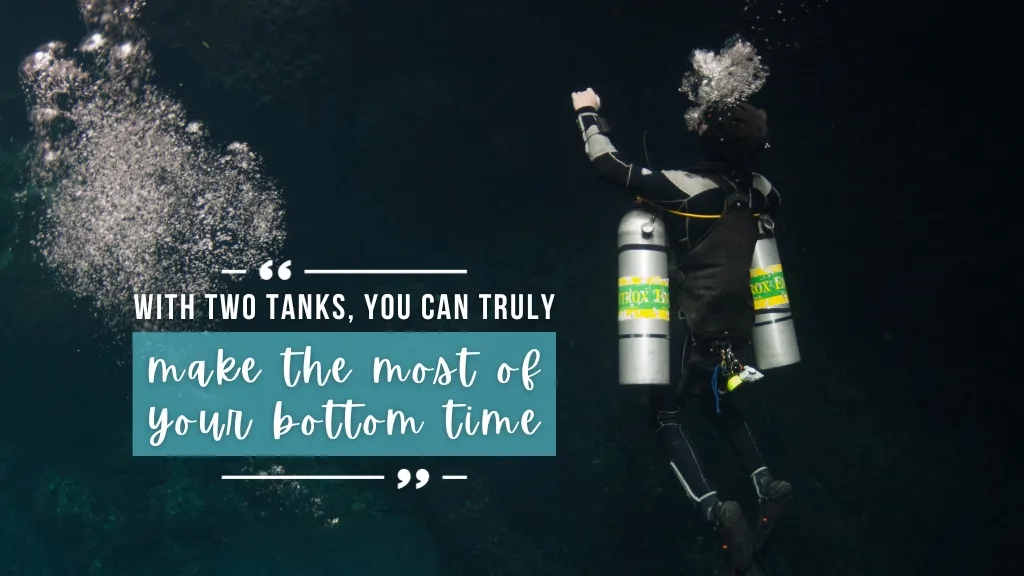
This is particularly useful for divers who use nitrox (also called enriched air) to extend their bottom time. Even in areas without access to nitrox, a greater air supply can be useful – especially if you’ll be spending lots of time in shallow water.
This can be especially useful for certain types of diving, such as research, underwater photography, or videography.
3. You have your own redundant air source
Another advantage of sidemount diving with two or more cylinders is that you have multiple, independent gas supplies. This means that if you have issues with one, you can switch to another.
Plus, even with one cylinder, diving in sidemount configuration can help you to problem solve. This is because your tank is close to you, which makes it easy to inspect it and make any necessary adjustments.
4. Sidemount diving is comfortable
Comfort is the main reason why sidemount diving is on the rise among recreational divers. Many divers, particularly those with back issues, enjoy sidemount diving as it reduces the pressure on their backs whilst underwater.
Plus, when sidemount diving it’s possible to enter the water without cylinders and attach them at the surface. This is dependent on the conditions and support available. Mounting cylinders in the water reduces the amount of time divers spend carrying heavy tanks on land.
On top of that, the flexible nature of sidemount systems means that gear can be adjusted to suit individual body types, which can boost comfort levels.
However, it can take a lot of adjusting for certain body types. As they’re designed to be customised, harnesses tend to be on the bigger side, so smaller people may need a lot of changes. We’ve got a guide for that, though!
Finally, when you dive with multiple tanks, the weight of the cylinders offsets some of the weights you need to carry during the dive. Carrying less weights on a weight belt can help to reduce back strain.
If you’re diving with aluminium cylinders, though, make sure to do a weight check with empty tanks first. You don’t want to find yourself drifting upwards at the end of your dive!
5. It offers greater freedom of movement
Tanks positioned at the diver’s sides generally hinder movement less than back-mounted tanks. This offers divers greater freedom and flexibility underwater. You’ll find you have much more range of movement, particularly being able to move your arms and shoulders.
6. Sidemount configuration can be more convenient
Sidemount harnesses tend to be lighter and more compact than back-mounted options, so they can be more convenient for travelling. However, remember you’ll have to let your dive centre know ahead of time as you’ll need double the cylinders and perhaps some extra help gearing up. Finding a dive operator who caters to tech divers can help with this.
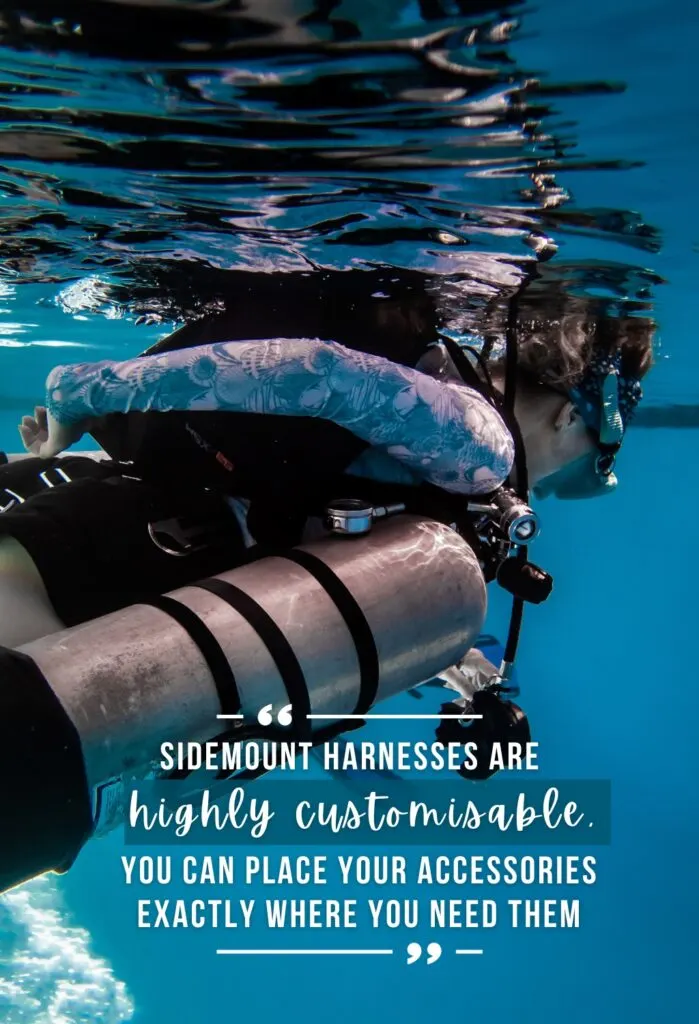
Sidemount harnesses are also highly customizable, so you can place your accessories exactly where you want them. This is extremely convenient if you’ll be diving with lots of gear you need easy access to – such as a camera, torch, or teaching materials.
Finally, unlike twinsets, sidemount diving involves regular tanks that you’ll find at dive stores all over the world, making it a convenient option when it comes to renting gear.
Disadvantages of Sidemount Diving
Despite having clear advantages, there are a few drawbacks of sidemount diving, too.
Gas Management
Firstly, managing your gas is slightly more complicated than regular diving because you have two air supplies to monitor. You also need to know how to switch between them safely, and to manage the gas use to maintain good buoyancy. Don’t worry though – gas management is a skill that you’ll learn all about on any sidemount course.
Travelling With Equipment
Although the harness might save some space in your dive luggage compared to a BCD, if you’re using more than one cylinder you’ll need multiple sets of regulators. This will soon add to your weight limit. Additionally, not all dive shops will have the equipment you’ll need. This means you’ll have to carry your regs and harness with you, which might be a pain if you want to travel light.
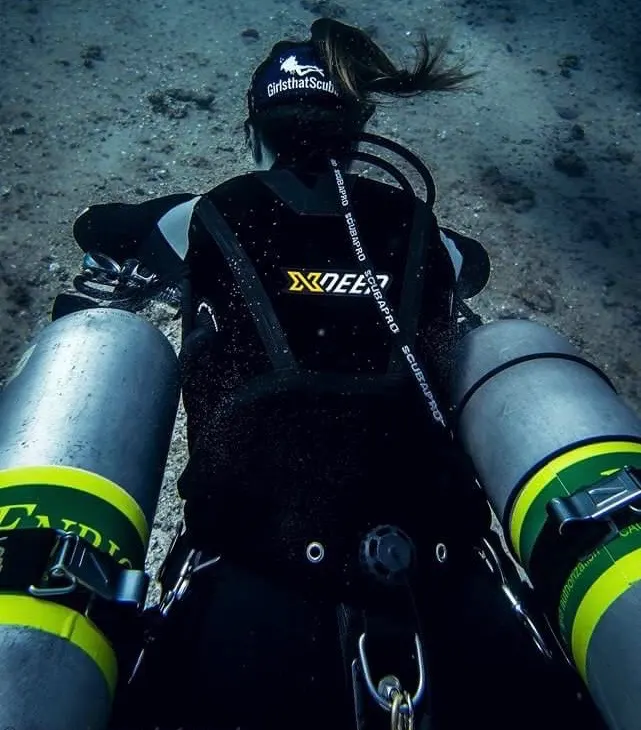
Gear Costs
Specialised gear isn’t cheap. If you’re serious about sidemount diving, you’ll have to shell out for a new harness and second set of regulators. Buying two regulator first stages definitely adds up!
Choosing kit is also more of a challenge when it comes to something so specialised. The best approach is to speak to an instructor, and potentially try different sidemount rigs if possible. However, to give you a helping hand, we’ve highlighted some popular sidemount harnesses here!
Popular Sidemount Harnesses for Women
As always with equipment recommendations, we checked our Girls that Scuba (and in this case, Girls that Tech Dive) communities to see what people are diving with and loving. The harness you choose will depend on a number of factors – lift capacity needed, whether you’re diving wet or dry, how many cylinders you’ll be carrying, whether you’re doing recreational or technical sidemount, amongst others.
Here are some of the most recommended sidemount harnesses for women:
- Apeks WSX-45 or WSX-25
- Dive Rite Nomad
- Hollis Katana 2
- Razor
- X-Deep Stealth Tec or Rec
- Halycon Zero Gravity
Join us in Girls that Tech Dive to ask questions and get advice on building your perfect sidemount setup.
Have you tried sidemount diving yet? Share this with a buddy you’d love to take the course with!

About the Author
Rose has spent the last few years living in Europe, the Seychelles and Kenya, working as a dive instructor, writer and conservationist. She’s back in the UK at the moment and is slowly acclimatising to cooler waters!

